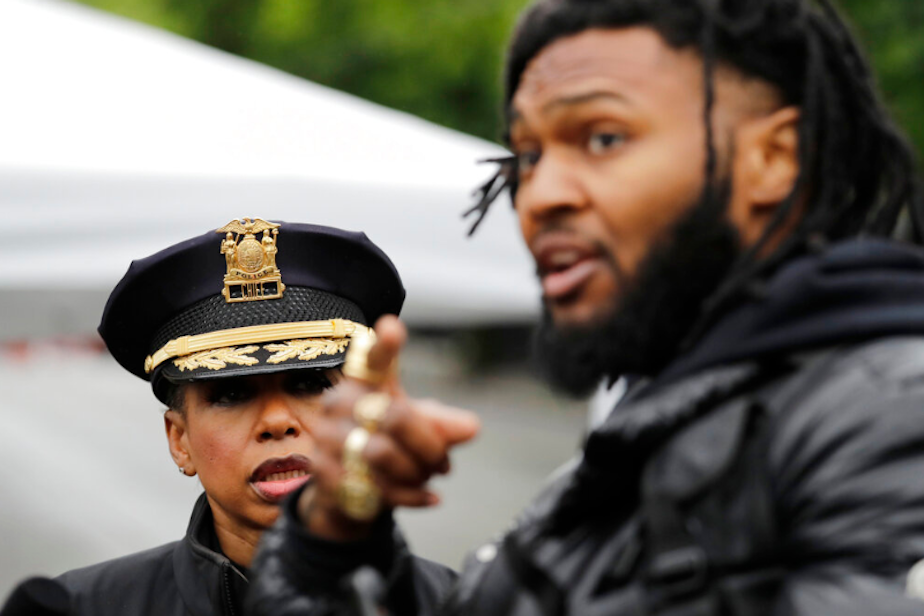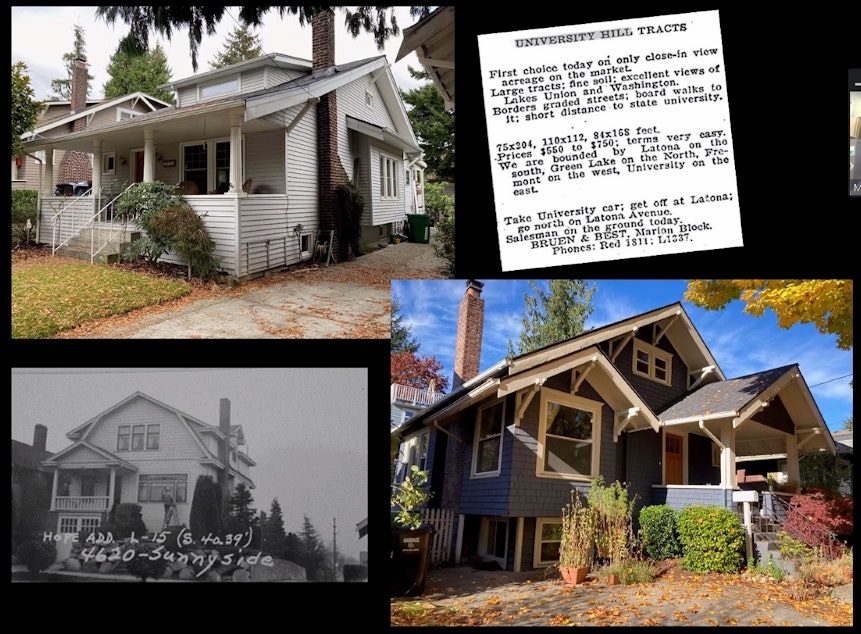6 women accused a Seattle hip-hop artist of sex trafficking: Today So Far

Six women accused a Seattle hip-hop artist of sex trafficking. They went to police, but no charges were ever filed.
This post originally appeared in KUOW's Today So Far newsletter for October 17, 2022.
Today's newsletter is going to be a bit different. No news roundup, rather, I'm going to give the spotlight to a single story by KUOW's Ashley Hiruko and The Seattle Times' Rebecca Moss. The following is a segment of a much larger story that opens up allegations into Seattle hip-hop artist Raz Simone.
Simone has built a name for himself in the local music scene, racking up millions of listens on Spotify alone. He garnered headlines in 2020 amid the Capitol Hill Organized Protest zone; you may recall photos/video of him touring CHOP with an assault rifle and a pistol, which went virial. Drawing from police records and interviews with women alleging he abused and trafficked them, another story emerges.
The story out today not only covers six women alleging that Simone trafficked and abused them, but also how local law enforcement handled the cases, ultimately not producing charges.
The following is reporting from this story.
Since 2017, at least eight people — six women and the parents of two others — have told [Detective William] Guyer and Seattle police that Simone entangled women in a multistate sex trafficking scheme, with the promise of love and lucrative jobs, then coerced them into sex work in Seattle, New York, Portland, Las Vegas, and other cities. Some of the alleged crimes dated back to 2012.
Sponsored
They said Simone required them to earn $1,000 a day, which he collected, isolated them from their families, tracked their movements, and controlled their eating habits. Like Campbell, women told police that they had been choked, beaten, threatened, raped, and in some cases imprisoned for days in claustrophobic sleeping containers. Women told police that Simone forced them to call him “master,” “king” or “God.”
Simone has denied these allegations. Police have never charged or arrested him for these alleged crimes.
Seattle’s handling of the allegations against Simone illustrates the complexity and consequences of failing to police sex trafficking. Washington was the first state to criminalize trafficking nearly 20 years ago. But law enforcement across the state, including Seattle, has struggled to use these statutes effectively and train officers to recognize and help trafficking victims. Prosecutions involving adult victims also have a higher burden of proof than for minors, and must show evidence of force, fraud or coercion.
Even as the MeToo movement has taken hold nationwide, Angelica Campbell and other women, who spoke with The Seattle Times and KUOW, said their hours of police interviews felt like screaming into a void.
And so, their complaints languishing with police, five women, including Campbell, filed a civil lawsuit in 2021 against Simone and his recording label, Black Umbrella, alleging that Simone conspired to “ensnare, imprison, and exploit” them for profit.
Sponsored
In September, they added the Seattle Police Department as a defendant for negligent investigation of their claims.
It should be noted that Simone did not respond to numerous requests for comment on this particular story. In the past, he has vehemently denied the allegations of sex trafficking and abuse against him, calling them an attempted shakedown.
Read the full, in depth story here.
AS SEEN ON KUOW

Sponsored
The neighborhood of Wallingford got a little more recognition at a recent meeting. In a unanimous vote, a group of experts decided that Wallingford should be awarded landmark status for its collection of historic buildings and houses. But critics are worried about the decision's repercussions, as the region faces a critical shortage of housing. (Vernacular NW)
DID YOU KNOW?
On this day, Oct. 17, 1901, the White House officially became the "White House."
George Washington lived in a couple mansions in New York while serving as the first U.S. president. The national capital moved around from New York, to Philadelphia, and eventually Washington, D.C., where an executive mansion was constructed. John Adams, the second president, was the first to occupy it in 1800. Elements of the executive mansion were drawn from Irish and French models. The labor that built it largely came from enslaved people and immigrants who were not citizens.
An urban myth emerged over the years that it was painted white to cover burn marks from when the British burned part of it in 1814, but it actually was painted white to protect its sandstone years before. It was called the executive mansion or presidential mansion through many administrations, but it was nicknamed the White House the whole time. It wasn't until 1901 that "White House" became official. That's when President Theodore Roosevelt sent an order to the secretary of state requesting official documents be changed to display "White House." It has been officially referred to under that name ever since.
Sponsored
ALSO ON OUR MINDS

The EU is moving toward training thousands of Ukrainian soldiers on its own soil
The European Union will train thousands of Ukrainian soldiers on its own soil starting as early as next month under a plan that is expected to be approved Monday by EU foreign ministers.

